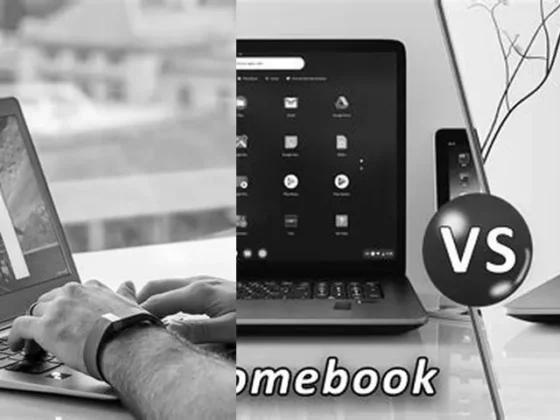What Does It Mean When a Pixel Is Black? Understanding Dead and Stuck Pixels and How to Fix Them – Welcome to Careero, where we dive into all things related to your digital display! Today, we’re going to shed some light on a pixel predicament that can drive anyone up the wall – dead pixels. If you’ve ever noticed those pesky black spots on your screen, you’re not alone. But fear not, because we’re here to help you understand the difference between stuck and dead pixels, why they turn black, and most importantly, if there’s a way to fix them. So, grab your magnifying glass and join us on this pixel-perfect adventure!
Understanding Pixel Problems: Stuck vs. Dead Pixels
Before we delve into the world of pixel issues, it’s essential to understand the basic structure of a pixel. In a color image, the pixel value is actually a vector of three numbers representing the red, green, and blue components. This is because each pixel on a screen is composed of three subpixels, one for each primary color. When these subpixels are functioning correctly, they combine in various intensities to create the full spectrum of colors that you see on your display.
What is a Stuck Pixel?
A stuck pixel is a common display issue where one or more of the subpixels remain in a lit state. This means that a stuck pixel can appear in any of the colors that its three subpixels (red, green, and blue) can form. The colors can range from good ol’ RGB to secondary colors like cyan, magenta, and yellow, depending on their functionality and brightness. Stuck pixels are often temporary and can sometimes be fixed with various methods, which we will explore later in the post.
What is a Dead Pixel?
On the other hand, a dead pixel is a more severe problem. In a dead pixel, all subpixels are permanently off, which will make the pixel appear black. Dead pixels on a monitor appear as black and flat areas because they are no longer emitting any light. Unlike stuck pixels, dead pixels are usually permanent and indicate a failure of the pixel itself.
Identifying Dead Pixels on Your Display
It’s important to distinguish between dead and stuck pixels when you’re diagnosing screen problems. To do this, you can use specialist sites like LCD Dead Pixel Test and Bad Pixel Test. These sites display various colors and patterns on your screen, which can help you identify whether you have dead pixels or just stuck ones.
Using Online Tests
When you use an online dead pixel test, you’re essentially checking to see if all pixels on your monitor can display the test colors correctly. If certain pixels remain black or do not change colors along with the rest of the display, you are likely dealing with dead pixels.
Why Pixels Turn Black
The black in pixels is typically represented by the value zero. This means that if all three subpixels (red, green, and blue) are registering as zero, they emit no light, and therefore, the pixel appears black on the screen. Values in between zero and the maximum value, which is often 255, make up the different shades of gray. In full-color images, the combination of these values defines the entire color spectrum.
Can You Fix Dead Pixels?
Unfortunately, dead pixels are generally considered irreparable. The permanent loss of functionality in the subpixels means that no amount of software or hardware manipulation will bring them back to life. In the case of dead pixels, the only definitive solution is to replace the screen.
Addressing Stuck Pixels
Although stuck pixels are not as severe as dead pixels, they can still be annoying. However, there are several DIY methods you can try to unstick these pixels:
- Pixel-fixing software: These programs flash your screen with rapid changes of colors to revive the stuck pixel.
- Manual pressure: Gently applying pressure to the stuck pixel with a soft cloth can sometimes get it unstuck.
- Heat application: Some users have reported success by applying heat with a warm cloth or a small heat-emitting device, but this should be done with caution.
Google Pixel Black Screen: A Different Issue
If you’re a Google Pixel phone user and your entire screen remains black, don’t panic—it might not be an issue with your pixels. A drained battery is often the culprit. It’s recommended to charge your phone for at least 10 minutes before trying to turn it back on. If the screen lights up after charging, the black screen was due to the battery being completely out of power and not because of dead or stuck pixels.
What to Do If Charging Doesn’t Help
If charging doesn’t resolve the black screen issue on your Google Pixel, consider other troubleshooting steps like a forced restart, checking for physical damage, or reaching out to customer support.
Preventing Pixel Problems
While you can’t always prevent dead pixels, there are some best practices to follow that could minimize the risk:
- Do not apply excessive pressure to your screen.
- Keep your display clean and dust-free.
- Consider using a screen protector to guard against physical damage.
- Turn off your monitor when not in use to reduce wear and tear.
Dead Pixels and Warranty Coverage
Many manufacturers have a dead pixel policy, which means that if your screen has a certain number of dead pixels, you might be eligible for a repair or replacement under warranty. It’s always recommended to check the warranty terms when you purchase a new display device.
Conclusion
Understanding the difference between stuck and dead pixels is key to diagnosing screen issues. If you encounter a black pixel, use the knowledge and tips provided to determine whether it’s stuck or dead. For stuck pixels, try some of the methods mentioned to fix them. However, if you’re dealing with dead pixels or a black screen on a Google Pixel phone due to a drained battery, you’ll have different courses of action.
Remember to utilize online tests to identify dead pixels and follow preventive measures to maintain your display’s longevity. If all else fails, check if your device is still under warranty for potential repair or replacement options. Pixels may be small, but they are the building blocks of our visual digital world, so take care of them wisely.
FAQ & Related Questions about What Does It Mean When A Pixel Is Black?
Q: What does it mean when a pixel is black?
A: When a pixel is black, it typically means that all subpixels are permanently off, resulting in a dead pixel.
Q: How do you know if a pixel is black?
A: You can determine if a pixel is black by setting your screen to display a single color and carefully inspecting each color displayed. A dead pixel will appear black.
Q: Are black pixels stuck or dead?
A: Black pixels are typically associated with dead pixels, where all subpixels are permanently off. Stuck pixels, on the other hand, can appear in various colors depending on their functionality and brightness.


